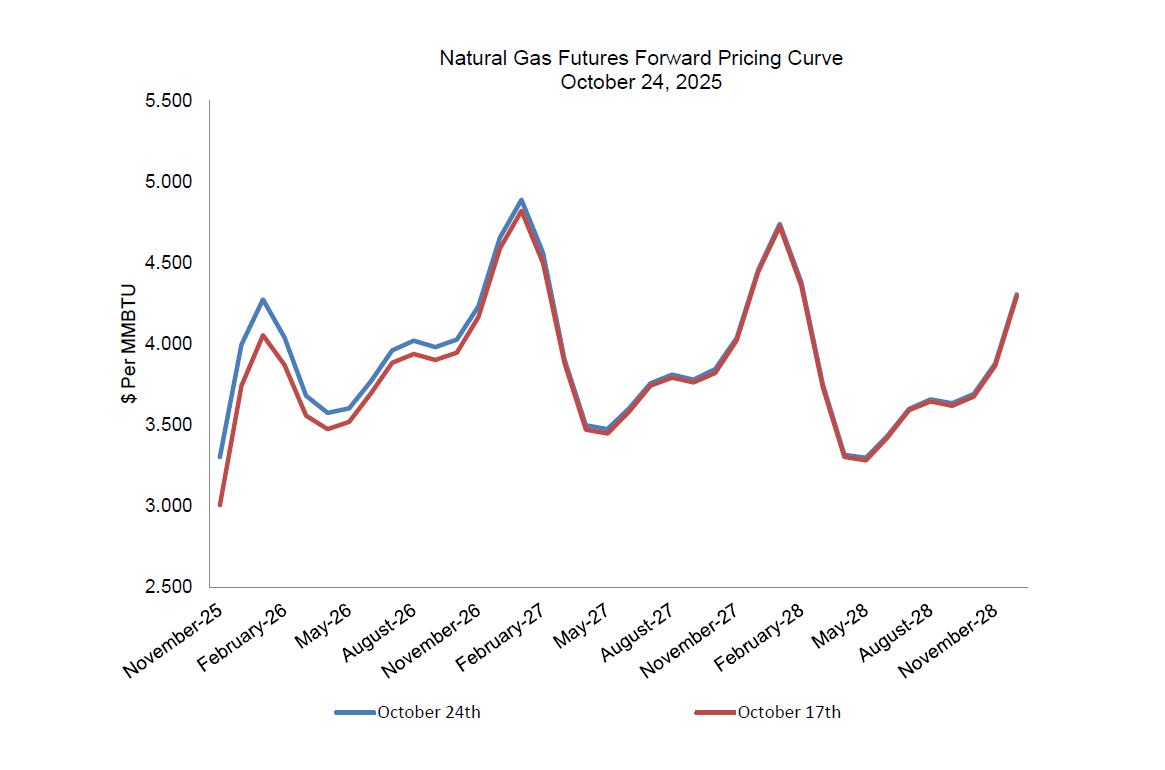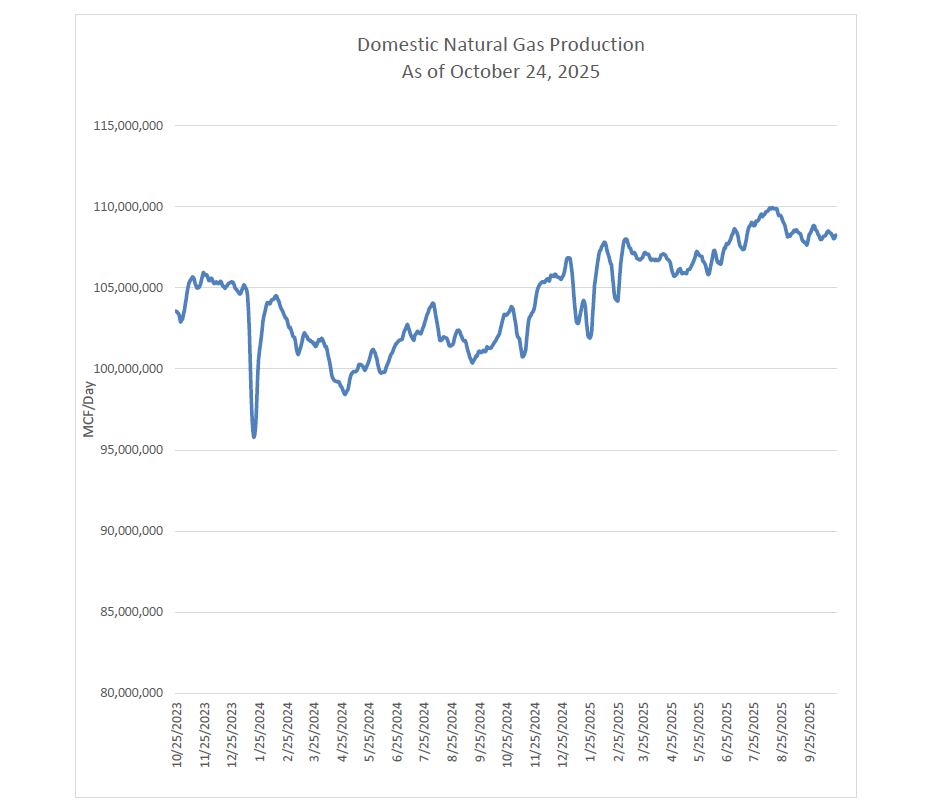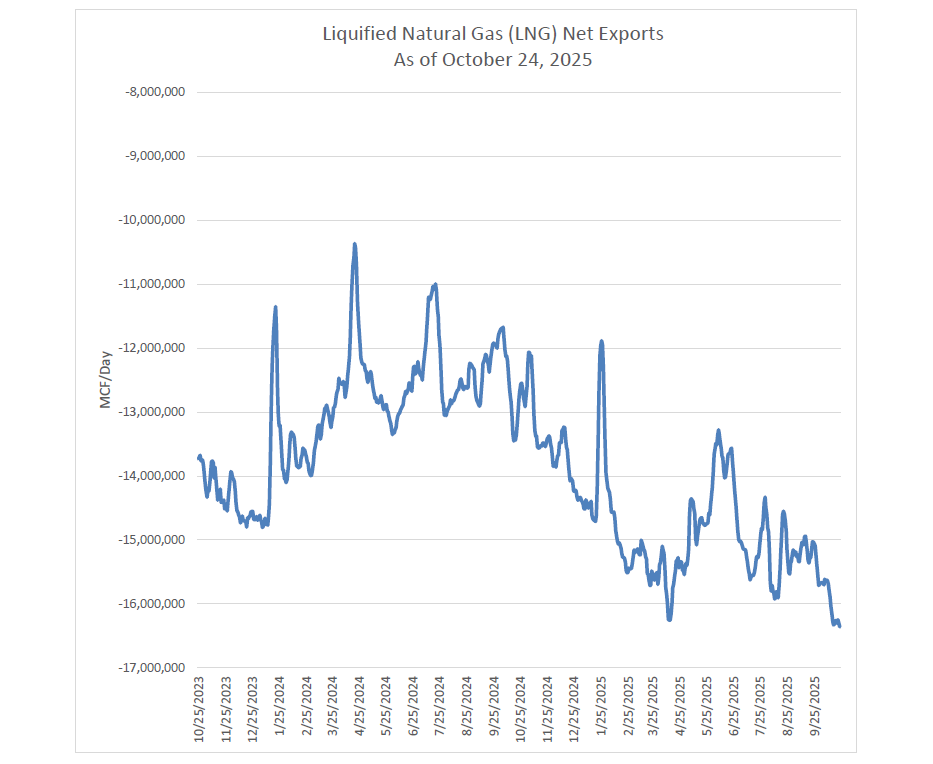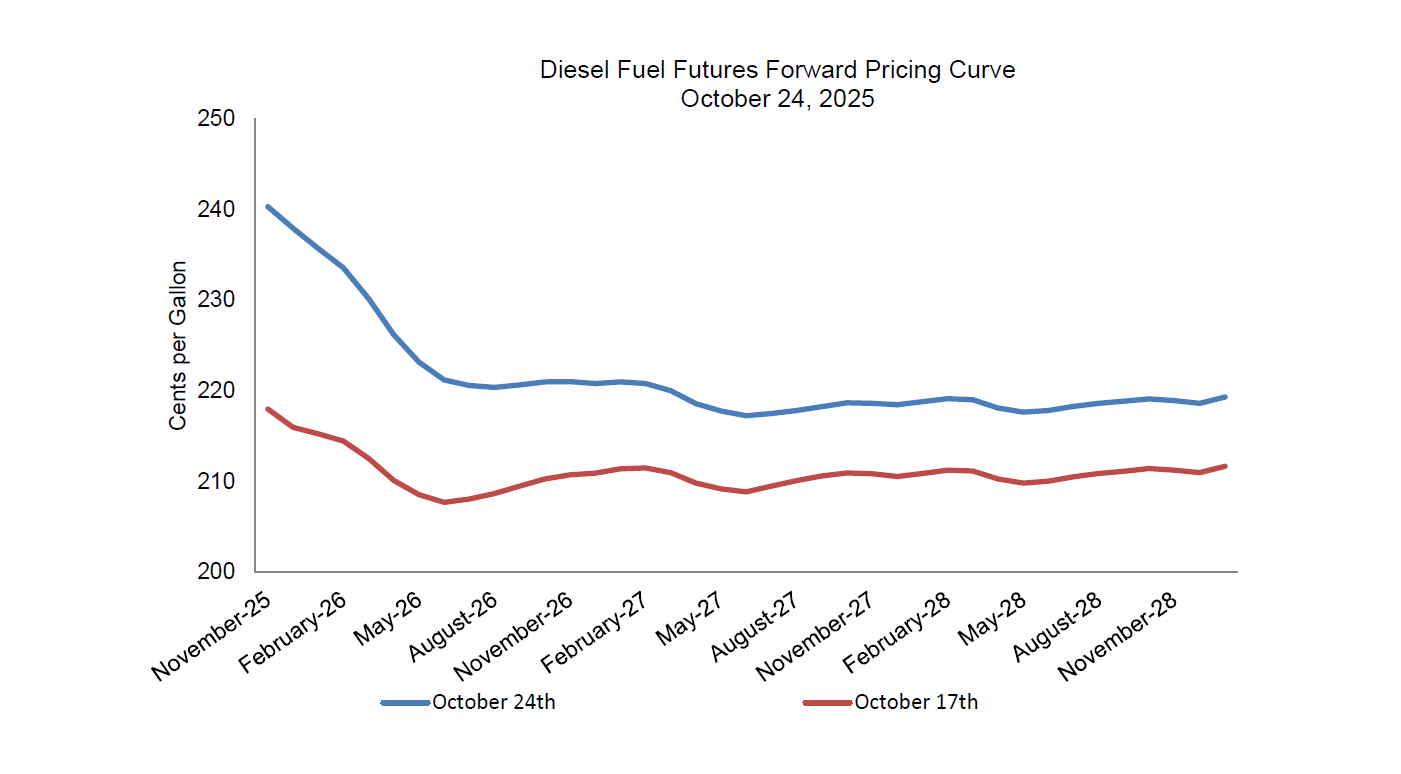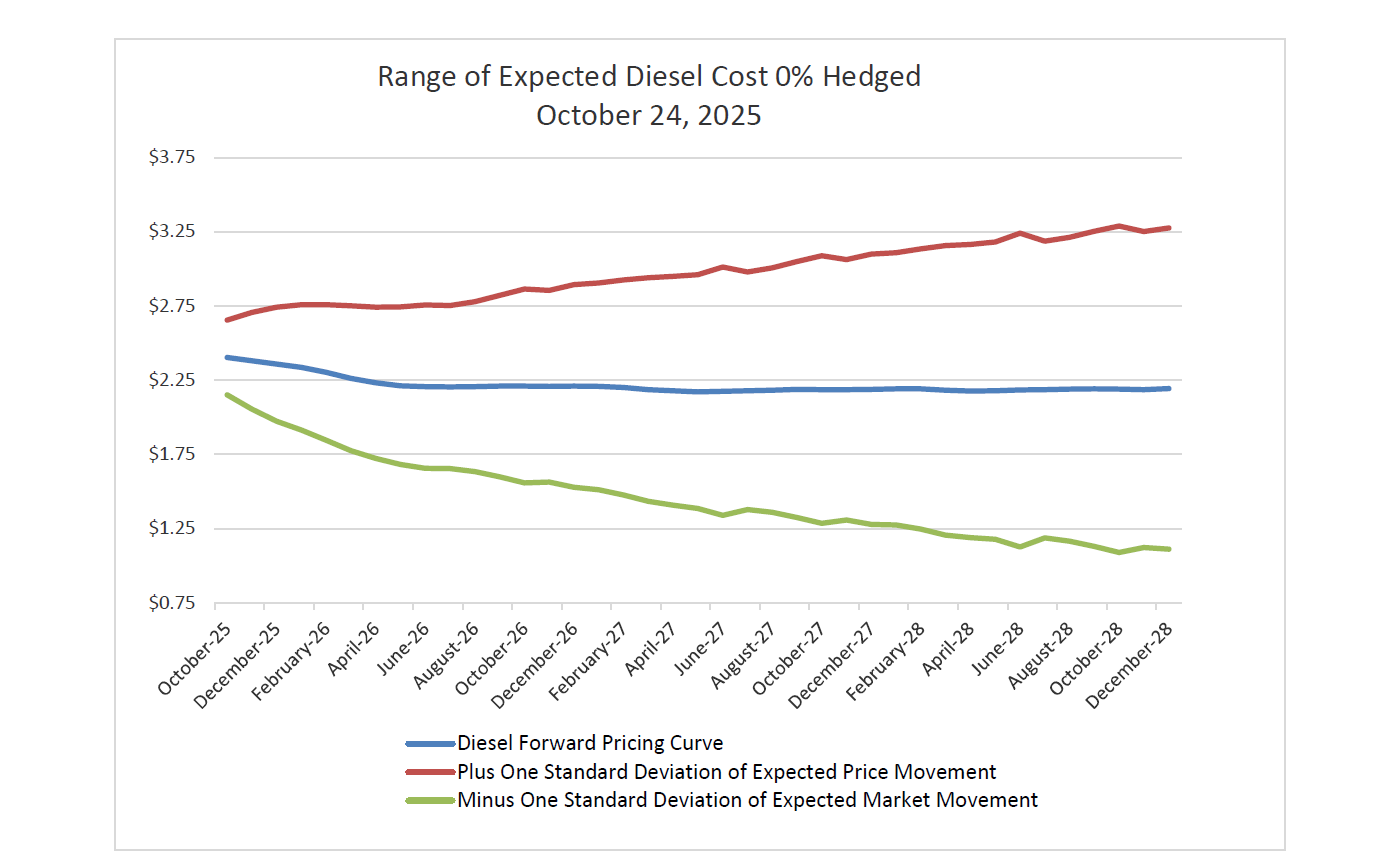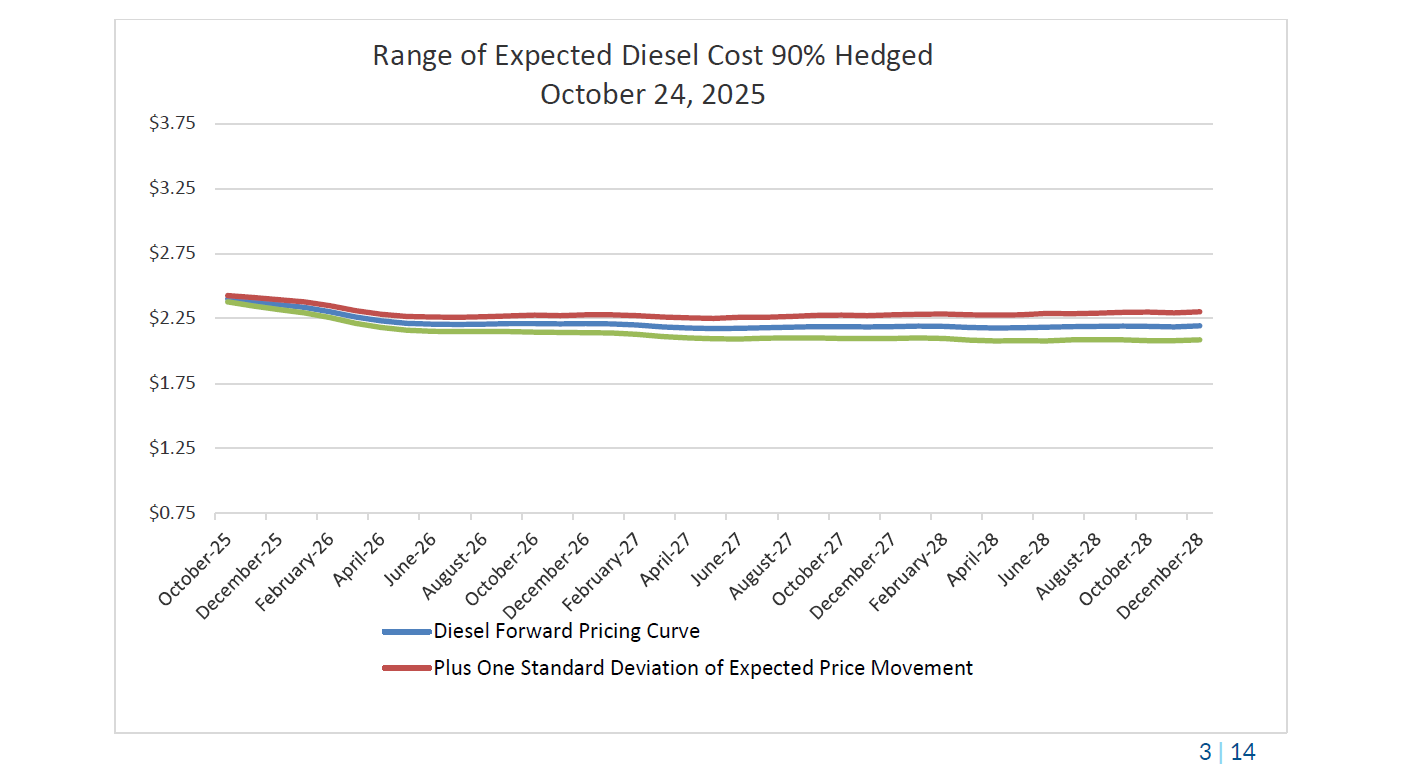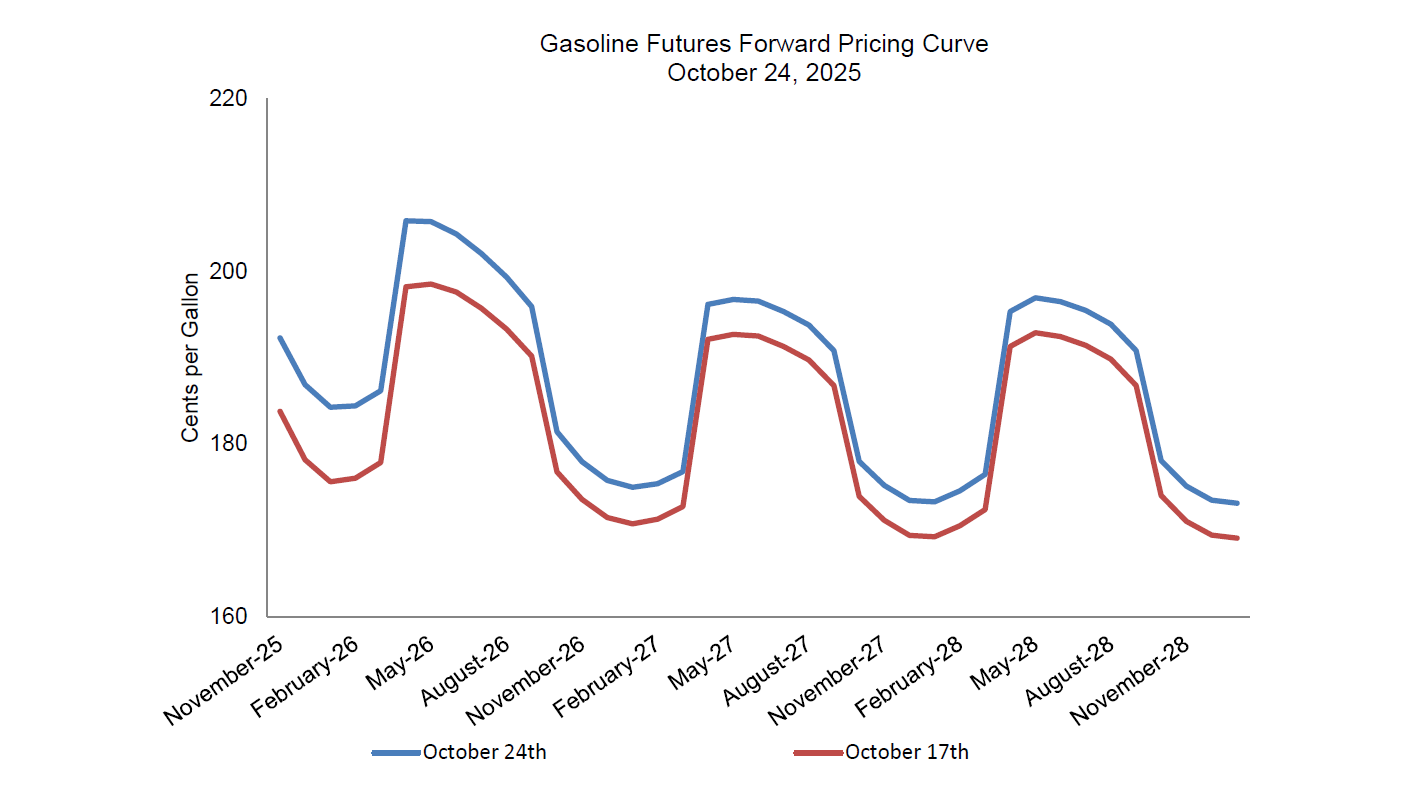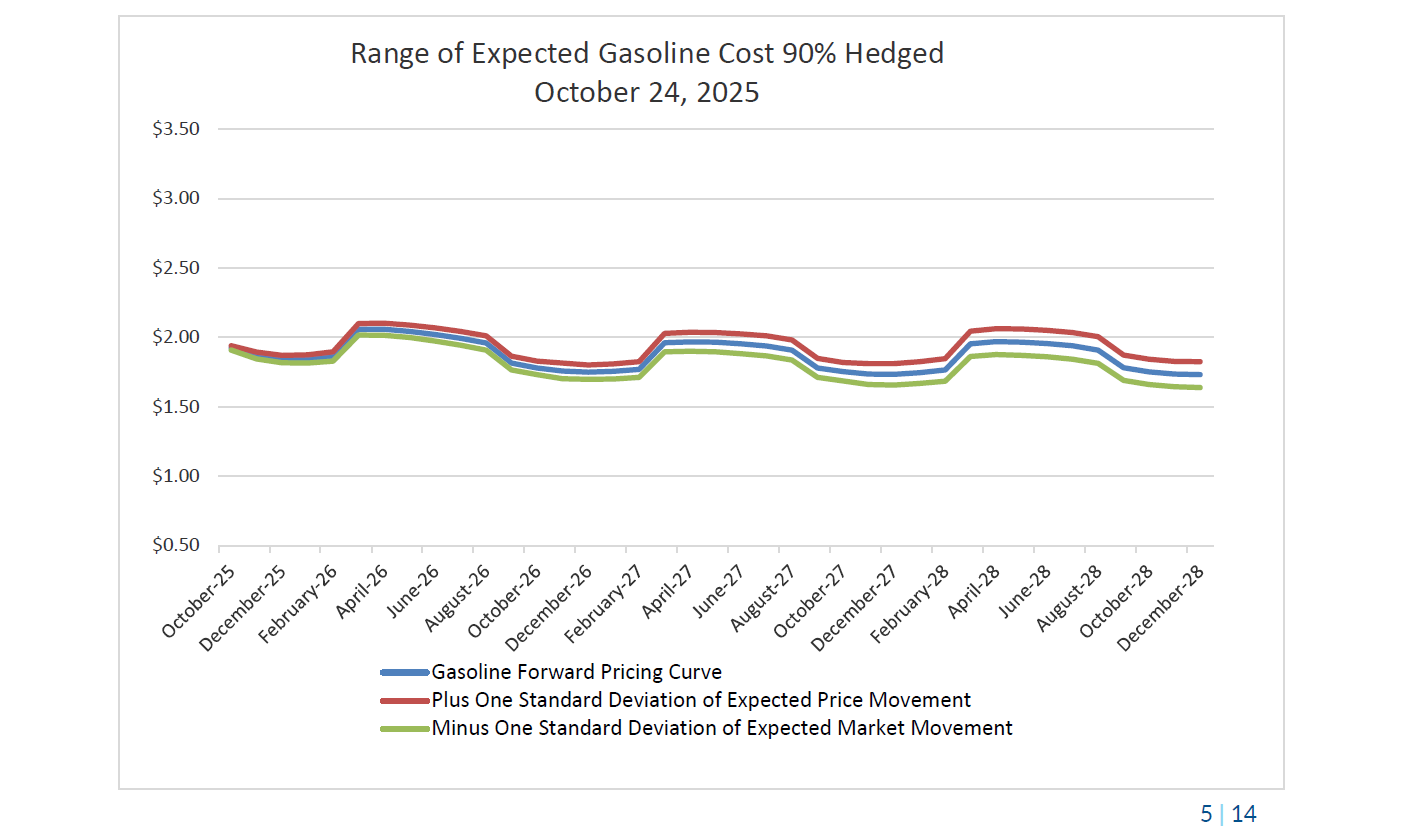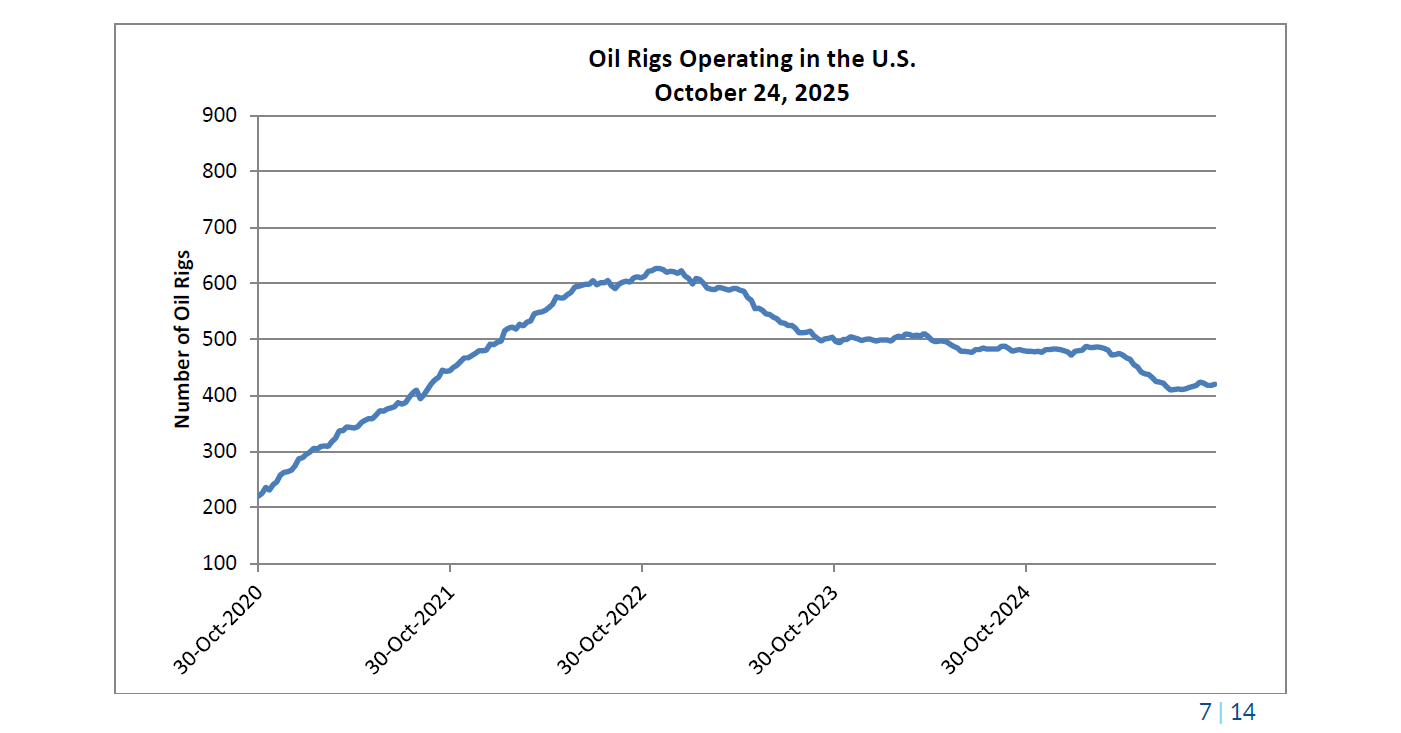New Updates
FUEL HEDGING & NATURAL GAS MARKET UPDATE (October 25, 2025)
PRICES HIGHER – INVENTORIES HIGHER VS. FIVE YEAR AVERAGE AND
HIGHER VS. EXPECTATIONS – PRODUCTION LOWER – DEMAND HIGHER
EXPORTS HIGHER – RIG COUNT UNCHANGED
Price Changes:
- Spot price increased by $0.296 per MMBTU (+9.84%).
- Forward price for the year decreased from a $1.157 premium to $0.928 premium.
Key Market Drivers:
- LNG Exports: Reached an all-time high, contributing positively to price increases.
- Inventories: Increased by 87 Bcf, exceeding expectations and the five-year average.
- Demand: Increased by 2.97% compared to the previous week, with demand currently 5.51% higher than the five-year average.
- Production: Decreased by 0.14%, but still higher than the previous year.
Market Indicators:
- Rig Count: Stayed stable at 121 rigs.
- Hedge Favorability Index: Dropped to 13.84% from 15.41%, signaling reduced hedging attractiveness.
Outlook:
- With the approaching heating season, demand is expected to rise, which could introduce more price volatility.
FUEL HEDGING & PETROLEUM MARKET COMMENTARY (October 25, 2025)
PRICES HIGHER – CRUDE OIL PRODUCTION LOWER – INVENTORY LOWER -
DOLLAR HIGHER – STOCK MARKET HIGHER – SPECULATION UNAVAILABLE -
DEMAND HIGHER
Price Changes:
- Diesel: Increased by +$0.2231 per gallon (+10.23%).
- Gasoline: Increased by +$0.0850 per gallon (+4.63%).
Key Market Drivers:
- Sanctions on Russia: New sanctions on Russian petroleum and natural gas exports are pushing prices up.
- Inventories: Decreased by 4.59 million barrels, supporting price increases.
- US Domestic Production: Slight decrease of 7,000 barrels per day, down to 13.629 million bpd.
- Demand: Increased by 1.46% compared to the previous week.
- Geopolitical Factors: The truce between Israel and Hamas has helped reduce geopolitical risk and stabilize prices.
Market Indicators:
- Rig Count: Increased by 2 rigs, signaling more oil wells in development.
- Dollar Strength: The stronger US dollar (up by 0.53%) is generally negative for oil prices.
Outlook:
- The market is expected to remain volatile due to geopolitical risks, global production levels, and fluctuating demand.


